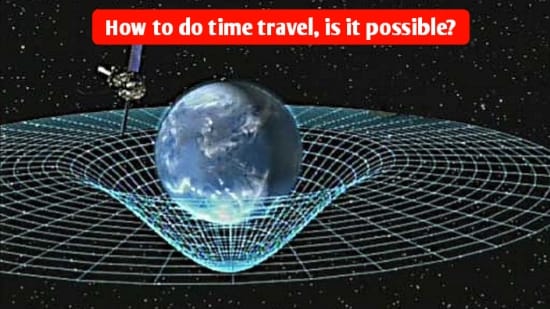How to do time travel, is it possible? Here is an overview of time travel from scientific, philosophical, and fictional perspectives:
How to do time travel, is it possible?
Time travel, the concept of moving through time in a manner other than the natural forward progression we experience daily, has long been a topic of fascination in science fiction and philosophy. While no practical method for time travel exists according to current scientific understanding, theoretical frameworks from physics provide some insights into how it might be conceivable under certain extreme conditions.
Here is an overview of time travel from scientific, philosophical, and fictional perspectives:
1. Scientific Theories on Time Travel
While time travel to the past remains largely speculative, some aspects of time travel to the future are grounded in scientific theory.
a. Einstein’s Theory of Relativity
Einstein’s theory of relativity, particularly General Relativity, suggests that time is not absolute but is intertwined with space to form a four-dimensional entity called spacetime. Here are some key concepts related to time travel:
- Time Dilation: According to Special Relativity, time can pass at different rates for observers moving at different speeds. A person traveling at near-light speed would experience time much more slowly than someone stationary. This is a form of “time travel” to the future.
- Gravitational Time Dilation: In General Relativity, massive objects can curve spacetime, and time moves more slowly in stronger gravitational fields. For example, near a black hole, time would move significantly slower compared to Earth’s time, so traveling close to a black hole could theoretically allow someone to “travel” to the future by experiencing less elapsed time.
b. Wormholes
Wormholes are hypothetical passages through spacetime that could connect distant regions of space and time. Some physicists have speculated that a wormhole could theoretically allow time travel if one end of the wormhole were accelerated to a high speed or placed in a strong gravitational field. However, creating or stabilizing a wormhole requires exotic matter, which has yet to be discovered.
c. Closed Timelike Curves (CTCs)
Einstein’s equations in General Relativity allow the theoretical existence of closed timelike curves, paths in spacetime that loop back on themselves. Objects following these paths could, in principle, return to an earlier point in their own timeline, thus traveling to the past. However, most physicists believe that the conditions required to create such curves are extremely unlikely, and paradoxes such as the grandfather paradox (where a time traveler could potentially prevent their own existence) complicate the concept.
d. Cosmic Strings
Another exotic theory involves cosmic strings, hypothetical one-dimensional defects in the fabric of spacetime. If two such strings were to pass close to one another, they could create a field of time dilation that might, theoretically, allow for time travel. Like wormholes, this is purely theoretical, and no cosmic strings have been observed.
2. Philosophical Implications
Time travel, particularly to the past, raises many philosophical questions:
- Causality: One of the biggest challenges with time travel is maintaining the principle of causality, the idea that cause precedes effect. If a time traveler were to go back in time and alter an event, it could result in paradoxes like the grandfather paradox.
- Alternate Timelines and Multiverse Theory: Some philosophers and physicists propose that if time travel to the past is possible, it might lead to the creation of alternate timelines or parallel universes. If a time traveler changes the past, they may create a new timeline, leaving the original one intact.
- Free Will: Time travel also challenges the notion of free will. If the past can be revisited and altered, it brings into question whether future events are predetermined or can be changed.
3. Technological Considerations
From a practical standpoint, time travel faces enormous technological barriers:
- Energy Requirements: The energy needed to manipulate spacetime, as suggested by General Relativity, would be astronomical. For example, creating a wormhole or a closed timelike curve would require more energy than is currently feasible with any known technology.
- Exotic Matter: Many time travel theories, such as those involving wormholes, require exotic matter with negative energy density to keep these structures stable. Exotic matter has not yet been discovered, and it’s unclear if it exists.
- Control and Navigation: Even if time travel were possible, navigating to a specific point in time would be incredibly complex, as you would need to account for the movement of celestial bodies and the expansion of the universe.
4. Time Travel in Fiction
Time travel has been a popular subject in literature, movies, and TV shows. Some famous examples include:
- “H.G. Wells’ The Time Machine”: One of the earliest depictions of time travel in science fiction, Wells’ novel explores the idea of a mechanical device that can move through time.
- “Back to the Future”: This film series popularized the idea of time travel via a car (the DeLorean) and introduced audiences to the consequences of altering the past.
- “Doctor Who”: In this long-running British TV show, the Doctor travels through time and space in the TARDIS, often dealing with the consequences of changing historical events.
- “Avengers: Endgame”: This blockbuster film explores time travel through the concept of the multiverse, where characters travel back in time to alter the outcome of past events.
5. Time Travel Paradoxes
- Grandfather Paradox: If a time traveler goes back and prevents their grandfather from meeting their grandmother, would the traveler still exist? This is the classic time travel paradox that challenges the logic of changing past events.
- Bootstrap Paradox: This occurs when an item or information is sent back in time and becomes the very catalyst for its existence in the future, creating a loop with no clear origin. For example, if someone receives information from the future and uses it to create something that was sent back in time, where did the information come from originally?
Conclusion
While time travel remains speculative and largely confined to the realm of fiction and theoretical physics, some aspects, such as time dilation, are real phenomena observed in nature. Traveling forward in time is scientifically feasible (at least at relativistic speeds), but traveling to the past is still a topic of great debate, with no practical or observed mechanisms. It remains one of humanity’s most intriguing scientific and philosophical mysteries.
How did you like the information given in our article today, please tell us in the comment section and for more such posts, follow our page The News House, thank you


